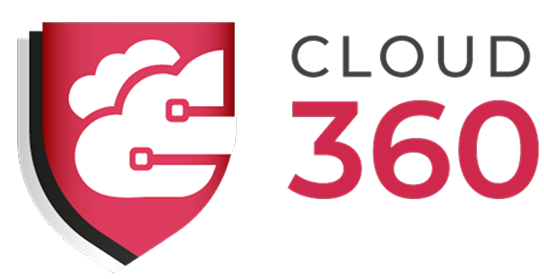The numbers are stark: 82% of organizations that experienced a significant data breach in 2024 were certified compliant with at least one major security framework. Let that sink in. The very companies that checked all the boxes, passed their audits, and maintained their certifications still fell victim to costly breaches. This isn’t just a statistic – it’s a wake-up call that our traditional approach to governance, risk, and compliance (GRC) is fundamentally broken.
The False Comfort of Checkbox Compliance
For too long, organizations have equated compliance with security. They’ve invested millions in maintaining compliance with frameworks like SOC 2, ISO 27001, HIPAA, and PCI DSS, believing these certifications would shield them from cyber threats. The reality? These frameworks, while important, often create a dangerous illusion of security while leaving critical vulnerabilities unaddressed.
Consider these troubling statistics:
- 65% of organizations that maintained continuous SOC 2 compliance still experienced significant security incidents
- 73% of companies compliant with PCI DSS at the time of assessment had let critical security controls lapse within nine months
- 58% of healthcare data breaches occurred in organizations that had passed their latest HIPAA audit
The Root of the Problem
Traditional GRC approaches suffer from three critical flaws:
Traditional compliance frameworks operate on annual or semi-annual assessment cycles. But cyber threats evolve daily, if not hourly. By the time a traditional audit is complete, its findings are already outdated. Your perfectly compliant environment from yesterday could be vulnerable to today’s zero-day exploit.
Manual Processes in an Automated World
Most organizations still rely heavily on manual processes for policy management, evidence collection, and compliance monitoring. In a world where attackers use automated tools to probe defenses 24/7, this human-paced approach creates dangerous lag times between identifying and addressing risks.
Siloed Compliance vs. Integrated Security
Traditional GRC tools treat each compliance framework as a separate entity, leading to redundant controls, contradictory policies, and gaps in coverage. This fragmented approach not only wastes resources but creates blind spots that attackers can exploit.
The Real Cost of Traditional GRC
The financial impact of this broken approach is staggering. Organizations spend an average of $3.5 million annually on compliance activities, yet 71% of them still experience security incidents that their compliance programs failed to prevent. This doesn’t include the cost of breaches themselves, which averaged $4.7 million in 2024.
Time for a Paradigm Shift
At Cloud360, we believe it’s time for a fundamental reimagining of how organizations approach GRC. The future isn’t about more checkboxes or longer policy documents – it’s about intelligent automation that adapts to evolving threats in real-time.
Key Principles for Modern GRC:
1. Continuous Compliance Monitoring
Replace point-in-time assessments with real-time monitoring systems that continuously evaluate your security posture. Our Enhanced Cloud Security Assessment Platform performs over 2,000 security checks every hour, ensuring that compliance isn’t just a snapshot but a continuous state.
2. AI-Driven Policy Management
Static policies can’t keep pace with dynamic threats. Our Advanced Policy Management System uses AI to analyze emerging threats, regulatory changes, and your organization’s unique risk profile to automatically generate and update policies. This ensures your security stance evolves as quickly as the threats you face.
3. Unified Control Framework
Instead of treating each compliance framework separately, adopt a unified approach that maps controls across frameworks. Our Advanced Control Mapping System uses AI to identify overlaps and gaps, ensuring that a single control implementation can satisfy multiple compliance requirements while maintaining robust security.
4. Automated Evidence Collection and Validation
Manual evidence collection is error-prone and resource-intensive. Our Enterprise Compliance Management Platform automatically collects, validates, and organizes evidence, reducing compliance overhead by up to 70% while improving accuracy.
5. Predictive Risk Management
Don’t just respond to threats – predict them. Our AI/ML Platform analyzes patterns across your environment to identify potential vulnerabilities before they can be exploited, helping you stay ahead of both compliance requirements and security risks.
The Path Forward
The transition from traditional GRC to an automated, intelligence-driven approach won’t happen overnight. But organizations that cling to manual, checkbox-based compliance processes are increasingly finding themselves both non-compliant and insecure.
Start by asking yourself these questions:
- How much time does your team spend on manual compliance activities?
- How quickly can you update policies in response to new threats?
- How confident are you that your compliance efforts actually improve security?
- Can you demonstrate continuous compliance, or just point-in-time certification?
The Future of GRC
The future of GRC isn’t about more audits or bigger compliance teams – it’s about intelligent automation that transforms compliance from a checkbox exercise into a dynamic, continuous security enhancement process. It’s about using AI to predict and prevent security issues, not just document them after the fact.
At Cloud360, we’re leading this transformation with solutions that don’t just automate existing processes but reimagine them entirely. Our platform doesn’t just help you maintain compliance – it helps you maintain actual security in an increasingly threatening digital landscape.
Take Action
Ready to move beyond checkbox compliance? Here are three steps you can take today:
- Request a FREE Cloud Cybersecurity Assurance assessment
- Download our white paper on the future of automated compliance
- Schedule a Consulting engagement to review your current GRC processes
The choice is clear: continue with traditional GRC and accept growing risk, or embrace the future of automated, intelligent compliance. Which path will you choose?


